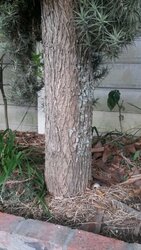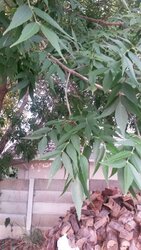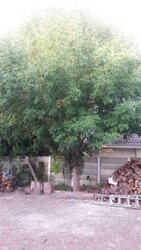I have this tree in my garden. I am not planning on cutting it down, not just yet anyway..
I don't believe it is indigenous to South Africa so I was hoping someone might recognize it.

I don't believe it is indigenous to South Africa so I was hoping someone might recognize it.




